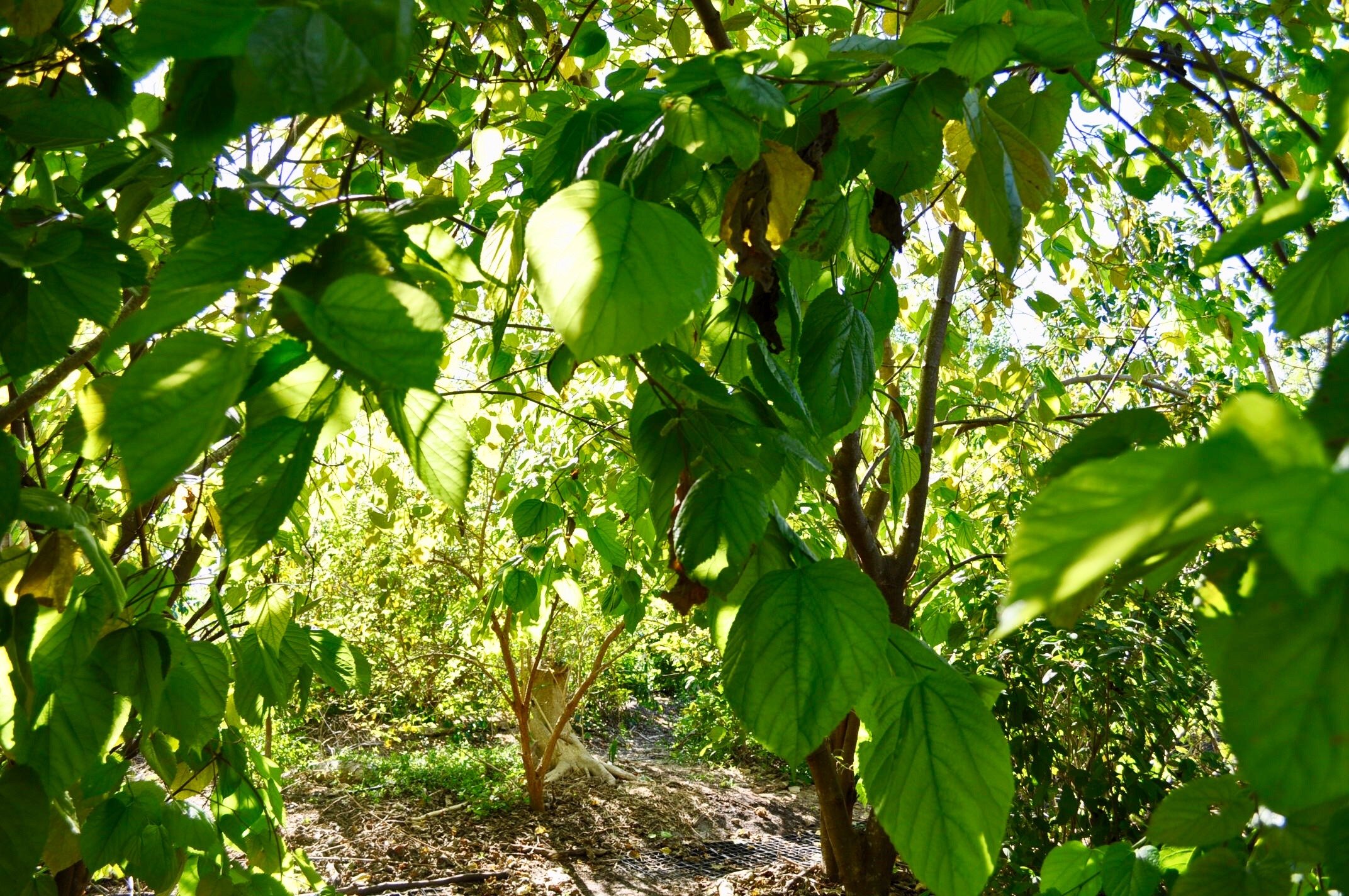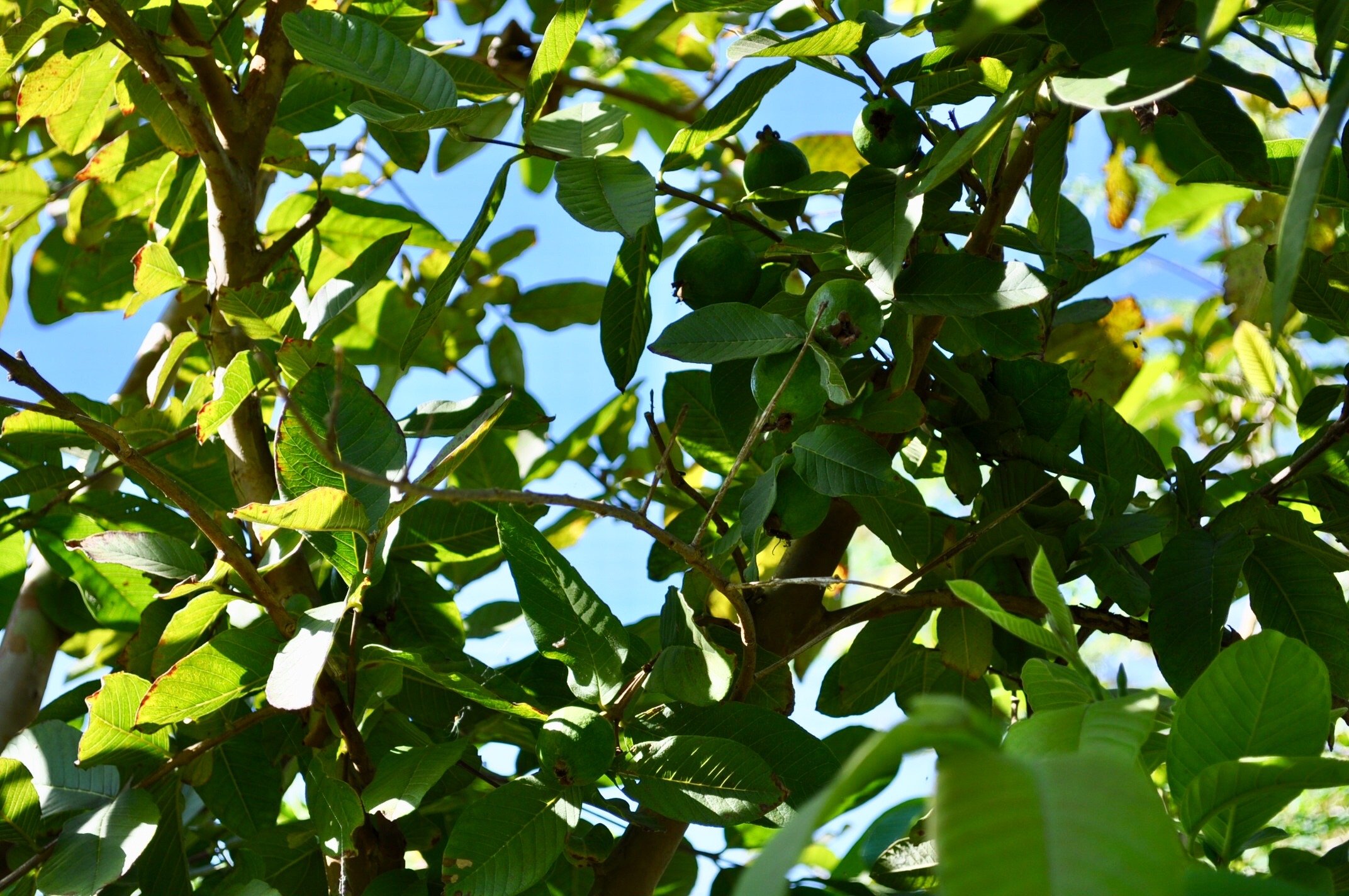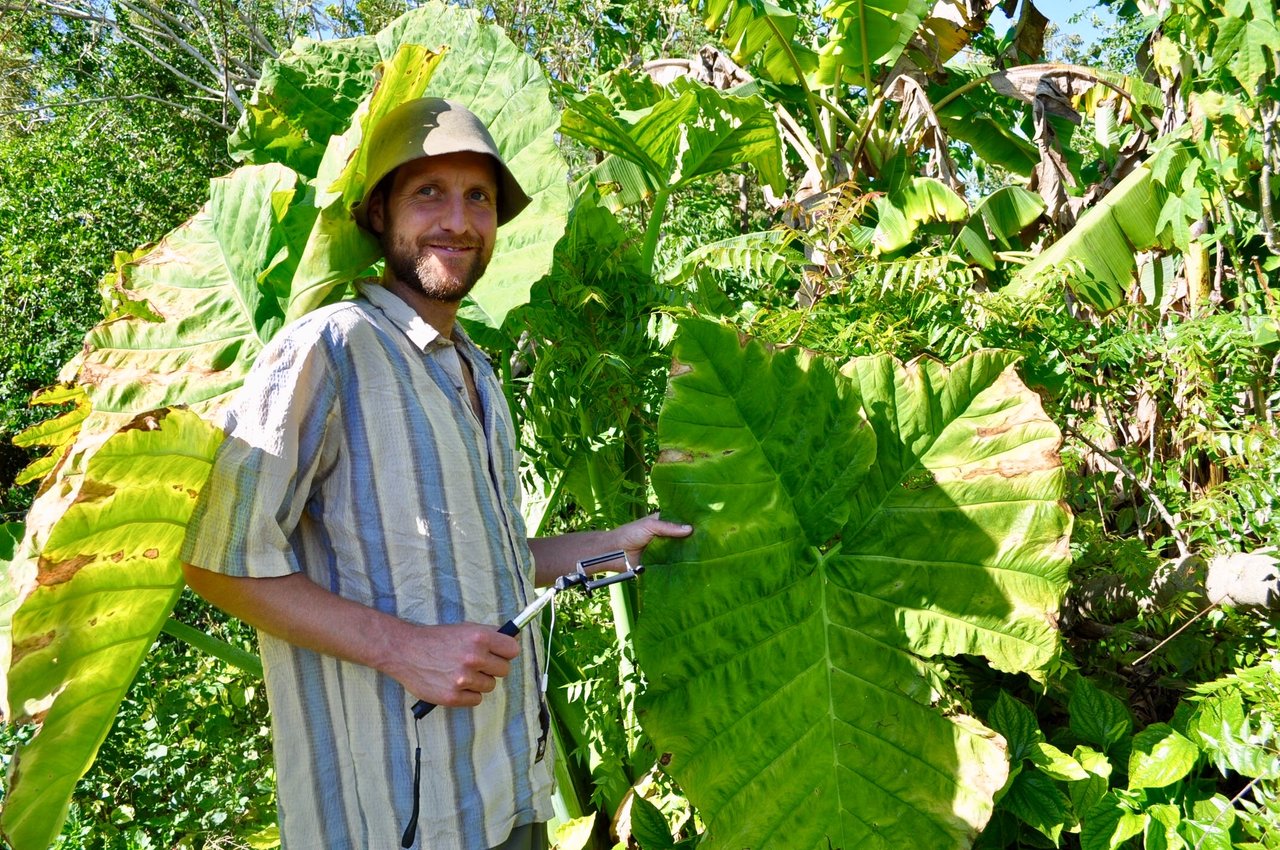
Today we had the opportunity to visit the FGCU (Florida Gulf Coast University) Food Forest!!
.jpg)
source
We had heard about this from a friend of ours who is creating a Food Forest in Hawaii. First, this food forest is 5 minutes from the highway and there were signs when you entered the University Campus directing one to the food forest- how cool is that?!!?

Earlier in the day, we spent time at ECHO and we were a little tired from a day spent on our feet (will post about that too!), but, when we entered the food forest, our spirits and bodies instantly picked up from all of the inspiration!!

I took a lot of photos, but we also decided to make a video, to give you a "feel" of the food forest, talk about some of the guilds (plant groupings) that we saw, and talk about what a food forest is!

Enjoy the video:

Of course, this entire time in Florida, we've been going wild at all of the fruit that is growing. It truly baffles us that everyone isn't growing all of these amazing fruits!

Food forests are where it's at! They create self-sustaining ecosystems that mimic forest growth patterns. This means less work for the grower, higher yields and healthy soils that build up over time. Part of our mission @mountainjewel is to EDUCATE the world on food forests and encourage many to start them, no matter the size, wherever they live. We're creating a food forest and it's a lot of work up front that diminishes over time as yields increase!

Let's take a walk together through the Food Forest to give you a feel of what was going on here!
Layers of a Food Forest
source
Canopy
In this demonstration site, Mulberry was one of the species in the canopy (along with Moringa, Papaya, Avocado, Mango, etc).

Papaya as the Canopy
This layer is filled with the largest and often longest lived species and often takes the longest to fill out. The Mulberries created a lot of shade.

These Mulberries were very happy & productive.

Functions of the Canopy
A canopy serves as the "climax" species, referring to ecological succession from disturbance to pioneer and finally climax. This means the "climax" period is the most complex phase of succession, although the process is not linear. The canopy is the uppermost layer and acts as the major solar collectors transforming sunlight into food and biomass while providing shade and habitat. Because of the larger size, the canopy plays a large role in water and nutrient distribution throughout the system. The canopy therefore improves soil and creates microclimates underneath.

Moringa Flower
Midlevel
This layer is comprised of shorter or dwarf trees. This serves similar functions as the canopy and bridges the gap from canopy to shrub layer. In this food forest example gauva and papaya fill this niche.
Here, it was encouraging to see that they were grafting (in this case, a guava).

Here is a underripe guava fruit:

There is a lot of potential in the Midlevel. Here we get some filtered sun so shade tolerant plants can be grown, and if on the edge of the forest, you can grow basically any plant that tolerates full to partial sun.

Here is an Atemoya (relative of Cherimoya and paw paw):



Loquat



Understory or Shrub Layer
We weren't familiar with many of the plants in this forest. The shrub layer is often phased out or transitioned to other species and the low trees and canopy mature. These species are often short lived and fill the niche in time from early establishment mid succession.

Herb Layer
The herb layer consists of herbaceous or woody plants that are between the ground cover and shrubs. Here there were banana and certain type of aster flowers. The herbs can offer food nectar and/or habitat for beneficial insects.

A relative of taro in the herb layer:

Here is a pineapple in the herb layer.

Hibiscus

As well as cactus
Ground Layer
Mulch! Very important aspect of Food Forestry is mulching the ground. This helps regulate temperatures, retain moisture, increase biodiversity, among other things. Some plants are used as "chop and drop" plants that you can cut and leave on the ground to accumulate matter. This keeps weeds down and slowly builds soil over time. If you use nitrogen-fixing plants, they also charge the soil with nitrogen and, if you chop and drop them, you get all of those accumulated nutrients building your soil above ground!

Mulched soil as as a result of chop and drop.

We were so encouraged to walk through this Food Forest today! The students at FGCU have done a fantastic job and are examples to the rest of us! We hope many will catch the drift of the Food Forest concept & start their own!

Herb Spiral

This post was written by a passenger on the #ecotrain, a gathering of Steemians who write about eco-conscious topics. Search the tag often for more inspiring content!

▶️ DTube
▶️ IPFS
